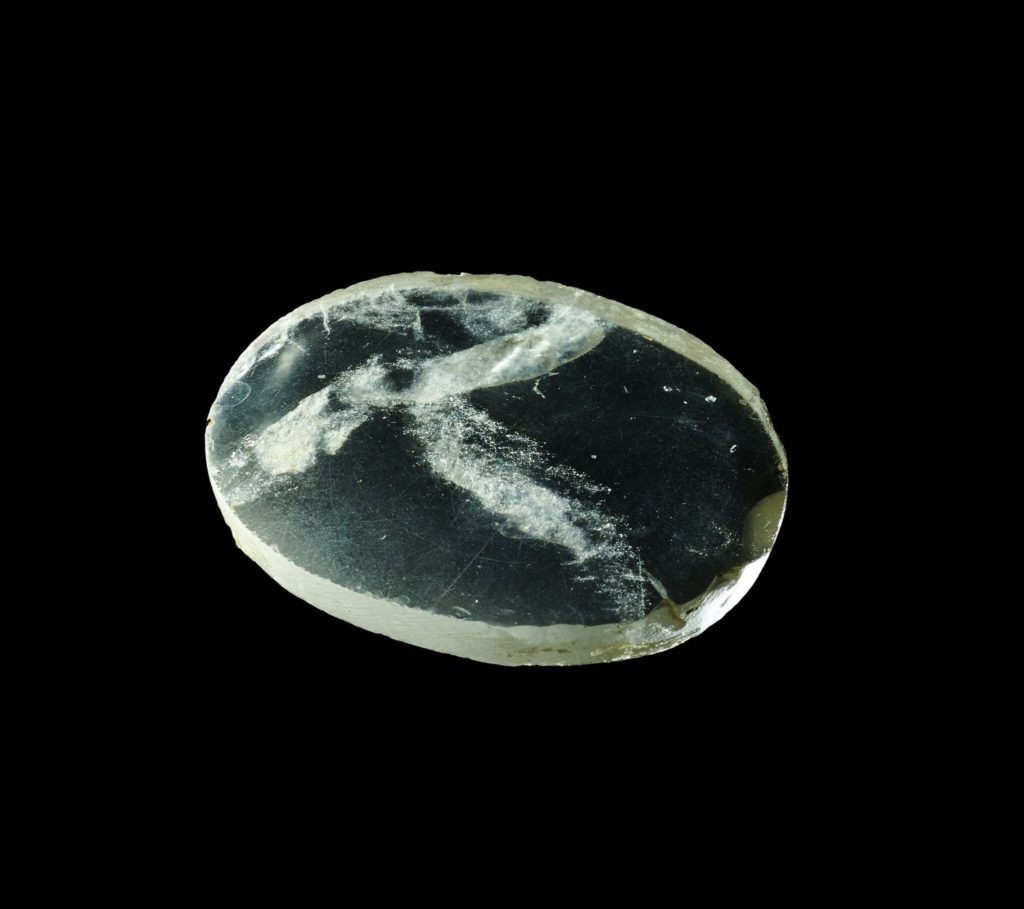Nimrud Lens: Did Assyrians invent telescopes 3,000 years ago?
According to some scholars, the ancient people of Assyria developed a unique lens for focusing light from distant objects.
Telescopes, in the modern sense of the word, were first invented and employed for astronomical purposes by the famous Dutch mathematician and astronomer, Galelio. He not only invented the telescope but was also the first to apply it in astronomy. And although some claim that other people might have previously invented telescopes, we know there is no evidence of this. But is it true?
Telescopes were perhaps invented and used in many ancient civilizations long before Galileo, but they were not widely used. The Layard lens, also known as the Nimrud lens – a 3000-year-old rock crystal discovered at the Assyrian palace of Nimrud in Iraq – could be a perfect proof of that.

The lens of Nimrud is slightly oval and was probably ground on a lapidary wheel. Its focal length is about 12 centimeters and its focal point is about 11 centimeters (4.5 in) from the flat side, equivalent to a 3X magnifying glass.
The Assyrians probably used it as a magnifying glass, a burning-glass to start fires by concentrating sunlight, or as decorative inlay. Twelve cavities were created on the lens surface during grinding, and they would have contained a trapped fluid, most likely naptha or another fluid trapped in the raw crystal.
Although some scientists believe that the ancient Assyrians used the nimrud lens as part of a telescope, to explain their sophisticated knowledge of astronomy, most other scientists argue that the optical quality of the lens does not appear to be adequate for viewing distant planets.
The belief that the nimrud lens was a telescopic lens arose from the fact that the ancient Assyrians saw Saturn as a god surrounded by a ring of serpents, their interpretation of Saturn’s rings as seen through a low-quality telescope.
In 1980, a group of archeologists from the University of Chicago discovered the Nimrud lens while excavating the palace of Nimrud, an ancient Assyrian city in Iraq. They found the lens buried among other pieces of broken glass of similar appearance, which resembled enamel from a disintegrating object, possibly wood or ivory.

The telescope is on display in Case 9 of the Lower Mesopotamian Gallery in Room 55 of the British Museum. Nimrud lens’ existence proves one thing for sure: Galileo did not invent the first telescope.
A second lens, possibly dating to the fifth century BC, was discovered in a sacred cave on Mount Ida in Crete. It was of higher quality and more powerful than the Nimrud lens.
Pompeii, an ancient city near Naples, Italy, was buried by the eruption of Mount Vesuvius in AD 79. Pliny and Seneca, ancient Roman writers, describe a lens used by an engraver in Pompeii. To say, you could find a number of clues and evidence that suggest, telescopes were invented and used in many ancient civilizations long before Galelio.
The Assyrians were conquered by the Persian Empire in the 6th century BC, after which they adopted Persian culture and practices. The Assyrian people are believed to have been the first to study astronomy systematically as early as in the 7th century BC. They used their knowledge of geometry, arithmetic, and astrology – combined with a passion for observation – to build one of the greatest civilizations that ever existed.
Therefore, tools like Nimrud lens might be used by ancient Assyrians to observe stars and record information about them — an early example of what could be considered science rather than just superstition or magic.
According to some scholars, the ancient people of Assyria developed a unique lens for focusing light from distant objects so that it appears large enough to see clearly. The result was an optical device known as the “astronomical double grape stalk” or as we know it today: the world’s first telescope.



